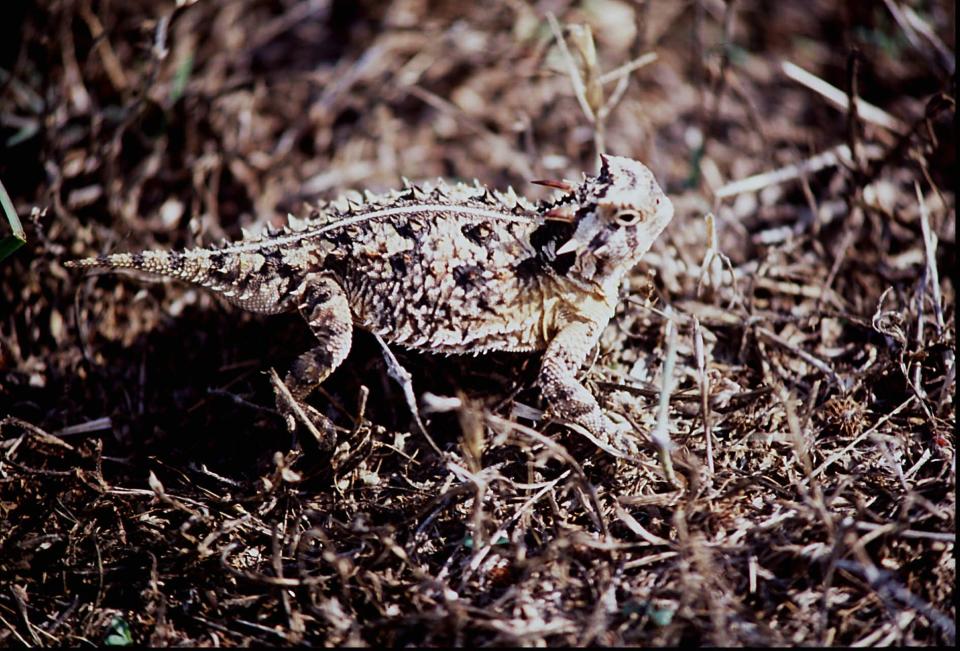Opinion: Bill would invest millions in Texas wildlife
We all know that Texas is just plain wild. No, we’re not talking about our politics. And we’re not talking about our honky-tonks on a Saturday night either.
We’re talking about nature: Wild Texas nature.
We have deserts, mountains, forests, rivers, lakes and the Gulf of Mexico – with amazing creatures like bears, panthers, dolphins, and eagles. We even have animals that only exist here and nowhere else on earth.
Texas wildlife is so beautiful, so mysterious and so downright mythical that people come from all over the world just to fish it, hunt it, look at it through binoculars – just to be near it.
But as our state grows, we’re taking up more land, using more water, introducing invasive species and even changing the climate. This degrades and fragments habitat, disrupts ecosystems, reduces native biodiversity and creates competition for scarce water resources. Several species of birds and mammals have already vanished from Texas and more than 1,300 are imperiled.
Take for example, the Texas Horned Lizard, also known as the horny toad. Its fierce-looking crown of horns and coloration help it blend into the sparse vegetation and serve as a deterrent to getting eaten. It can inflate itself to make it appear bigger and even shoot a stream of blood from its eye!

But threatened by habitat loss and invasive species, the population of the State Reptile of Texas has been in decline for decades. Thankfully, the Center for Conservation and Research team at the San Antonio Zoo has been breeding horned lizards since 2017 and this summer welcomed the arrival of the 34 hatchlings, later released into wild lands of owners excited to receive them.
Texans have shown that, with hard work, we can help our critters. The horned lizard, brown pelicans, peregrine falcons, the Guadalupe Bass and river otters are just a few of the species that are making a comeback. But hundreds more are in need of assistance - and that takes money.
Fortunately, Congress is on the cusp of passing the most significant wildlife investment program in this century. The Recovering America’s Wildlife Act (RAWA) would send nearly $1.3 billion to the states annually. This would bring as much as $50 million per year for the next five years to the Texas Parks and Wildlife Department (TPWD), which would in turn make grants to landowners, universities and local communities to do high-impact, locally-based wildlife work.
For example, TPWD wants to use the funds to build tunnels underneath roads in deep South Texas to protect ocelots from vehicle collisions and encourage these wild cats to move into new, expanded habitats. Funding would also go to offer incentives to willing landowners to restore sensitive and disappearing habitats and to get people outdoors in activities like nature photography, and paddling, birdwatching.
Because over 95% of Texas wildlife is on privately-owned lands, this bill makes sure that landowners are invited to participate in wildlife restoration and protection on a voluntary basis.
Pride in our beautiful state has always been a deeply held Texas value and the investments stemming from RAWA enjoy the broad support of the public. Statewide polling consistently shows that 84% of all voters agree with the statement: “Unless we protect Texas natural areas, we will lose the very things that make Texas a special place in which to live.”
The bill passed the U.S. House this summer and a bipartisan group of senators led by Sen. Martin Heinrich (D-NM) and Sen. Roy Blunt (R-MO) are working to pass the bill this month.
Let’s get it done, Congress: the horned lizard – and all of Texas’ wildlife – is counting on you.
Metzger is executive director of Environment Texas. Rep. John Cyrier (R - Lockhart) represents the 17th District in the Texas House of Representatives.
This article originally appeared on Austin American-Statesman: Opinion: Bill would invest millions in Texas wildlife

